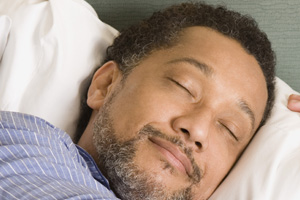Sleep Apnea (stopping breathing while sleeping) can be treated in several ways. However, the most common method is called CPAP (Continuous Positive Airway Pressure). CPAP is a small machine that delivers a soft cushion of air to the lungs and air passages. This serves to splint the airway open and in doing so, the airway is prevented from collapsing. The pressure is delivered through a mask that fits over the nose and/or the mouth. When adjusted to the appropriate pressure, CPAP devices are 100% effective in eliminating Sleep Apnea and snoring.
Unfortunately, approximately 40% of patients have difficulty with the treatment when they first use it. Problems vary from the inability to tolerate pressure to discomfort with the mask interface. Most of these issues are corrected easily. Masks for using CPAP are available in all shapes and sizes. In addition, the pressure delivery system can be altered to achieve comfort in most patients. To help patients out with CPAP problems, we utilize a technique called the PAP-NAP. It is a procedure in the lab during the daytime, where our technicians desensitize and acclimate patients to CPAP. We have found it to be very effective. In fact, our overall success rate is well above the national average.


